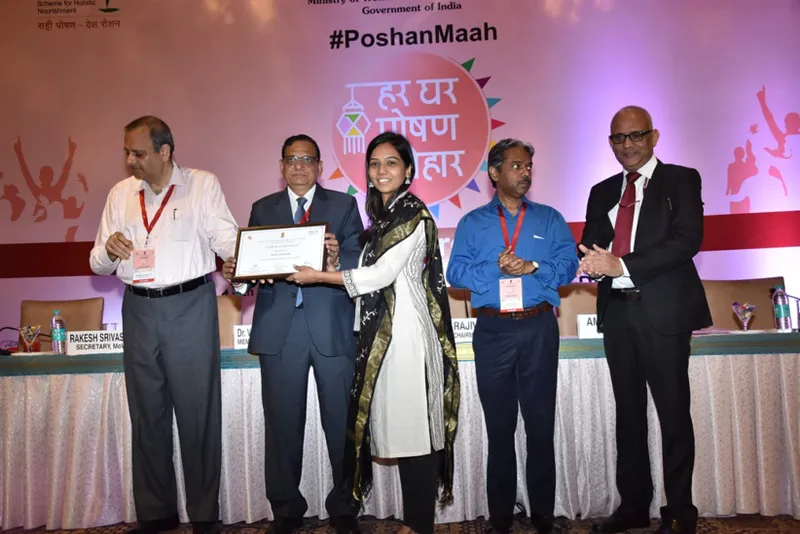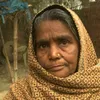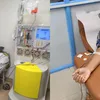Harnessing the power of young India for a better tomorrow
The youth are the catalysts of change and empowering them can lead to widespread change at the grassroots level as is evidenced by the success of the various public-private partnership initiatives.
Progress is achieved on the shoulders of the youth. Are the youth of India committed to driving change and actively involved in nation-building activities, is a question that foments many a debate. If the painstaking work done in the country-wide cleanliness and nutrition programmes is an indicator, the answer is an emphatic yes – the youth of India are truly a dividend for the country.
In the last five years, over 800 youngsters fanned out across the country to implement the Zila Swachh Bharat Prerak (ZSBP) and Swasth Bharat Prerak (SBP) programmes. It is they who helped achieve more than 99% coverage of sanitation in rural India. It is they who have increased the efficiency of the government’s nutrition network significantly by bringing in innovation and context-based solutions.
A number of innovation proposals written by Preraks brought specific support to supplementary nutrition programme, data-driven monitoring and diversified use of data to improve growth monitoring efficiency. While some initiatives are in the pilot phase, many have been adopted by states to implement at scale.
A unique model
The SBP and ZSBP programmes have emerged as a unique model of productively engaging the young in key developmental activities. At its core, it is a fellowship programme, which provides young professionals an opportunity to contribute tangibly to important national priorities by catalysing change on the ground.
Both these programmes have been able to drive real change, ensure convergence of services within multiple government departments, and facilitate data-driven decision making to identify and address issues quickly, thereby advancing health and cleanliness indicators.

A Swasth Bharat Prerak being recognised for her work with the communities by the Government of India
So, what makes these models special?
Firstly, it showcases how the public and private sector collaboration can successfully achieve developmental goals, and contribute to nation-building activities.
For ZSBP, the Ministry of Drinking Water and Sanitation collaborated with Tata Trusts in 2016 to boost the implementation of the pioneering Swacchh Bharat Mission, which aimed at eliminating open defecation and improving solid waste management. Under the programme, over 520 young professionals, one in each district, were appointed.

A Swasth Bharat Prerak organising a ‘POSHAN Chaupal’ to spread awareness and encourage a discussion on the importance of nutrition in children and young mothers
Similarly, in early 2018, a collaboration with the Ministry of Women & Child Development provided human resource support for the path-breaking POSHAN Abhiyaan by launching the SBP programme. At any given time, in its over two and a half year journey, over 300 Preraks were working closely with the district administration to drive the implementation of the Abhiyaan, and further the agenda for a malnutrition-free India.
Second, design for impact. A special feature of the fellowship is the placement of the Preraks with the District Collector -- the nerve centre of grassroots decision-making and implementation. As a district-level managerial and administrative resource, the Preraks have been able to cohesively contribute to effect real change on the ground.
Importantly, they have brought together various government departments to work collaboratively towards the common goals of the mission. Convergence, considered an hoary idea, is now a practical and doable reality.
Third, selecting the right human resources.
An important component of the fellowship is the selection of the Preraks. Bright, young and highly-skilled professionals, with backgrounds in engineering, medicine, management, law and social sciences are carefully selected after a rigorous screening process. Many of them gave up plush careers to be a part of this fellowship and make a difference.
Fourth, empower the human resources. The Preraks undergo a rigorous training programme that prepares them for the roles and responsibilities in the district. The training covers programmatic and technical know-how, and key skills such as critical thinking and leadership.
In the field, the district administration invests in them by entrusting them with key responsibilities. The results have been there for all to see. The Preraks have delivered and contributed substantially to moving the swacchta and malnutrition-free India agenda forward.
Fifth, the Prerak model is also unique in its implementation. It recognises sanitation and nutrition as public health interventions, which cut across sectors and a wide spectrum of stakeholders. Working together is not a luxury, it is a must if we have to overcome such huge challenges.
Given their success, the Swasth Bharat Prerak and Zila Swachh Bharat Prerak programme have emerged as models that can be replicated in other domains. Evaluation of the SBP programme has vindicated the uniqueness and robustness of the design and implementation. There is a need to open up more sectors for such innovative collaborations with the youth – a development that can create inclusive, sustainable, and stable communities.

A Swasth Bharat Prerak seen interacting with young children
It is also time for both the public and private players to further strengthen the partnerships to create inclusive processes and institutions and also explore unconventional approaches that can stimulate new models of growth.
Youth have been referred to as the ‘torchbearers’ of the 2030 Sustainable Development Agenda. They have a pivotal role to play -- as beneficiaries, partners and participants -- in its implementation. Indeed, the active engagement of youth is central to achieving sustainable, inclusive and stable societies.
As the former UN Secretary-General Ban Ki-Moon put it: "Let us acknowledge and celebrate what youth can do to build a safer, more just world. Let us strengthen our efforts to include young people in policies, programmes and decision-making processes that benefit their futures and ours."
It is, therefore, imperative that we give wings to their curiosity, enthusiasm and ideas and actively engage them in building a better tomorrow. With access to suitable opportunities, young minds can tackle problems like no generation before.
(Disclaimer: The views and opinions expressed in this article are those of the author and do not necessarily reflect the views of YourStory.)








